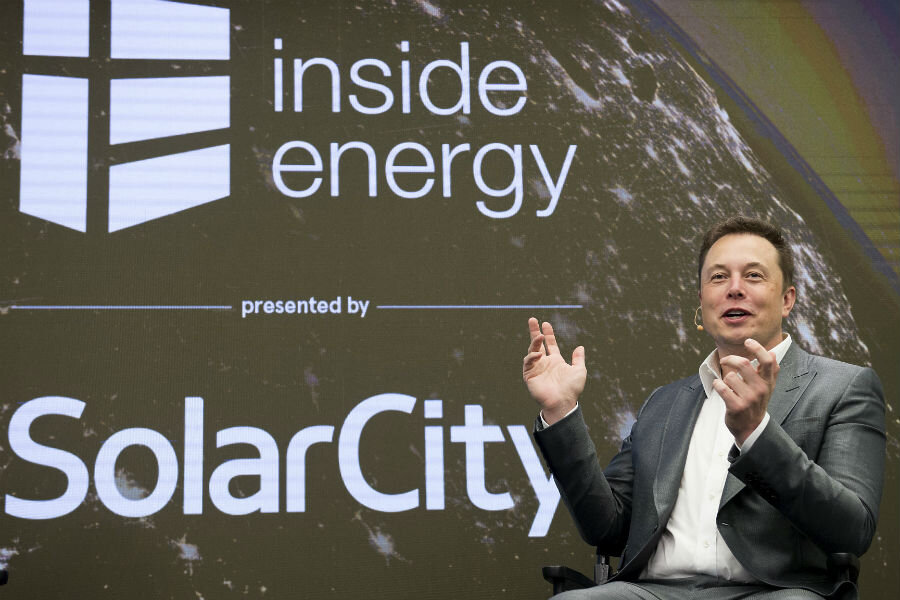Could office buildings that store power help fight climate change?
Loading...
Real estate giant Irvine Co. has come up with a solution that could help fight climate change and regain lost power capacity in Orange County, Calif., what some are calling the largest energy-storage project in commercial real estate, ever.
The company plans to install energy systems in about 15 buildings throughout Newport Beach and Irvine using batteries bought from Tesla, a company best known for luxury electric cars, reports The Los Angeles Times.
If that doesn’t sound like a big deal, consider this: the units will help Southern California Edison power as many as 10,000 homes by storing energy during periods of smaller demand and cheaper prices. Up to 10 megawatts of electricity will be collected for the utility company.
Tesla has a lot to do with all this, having unveiled an ambitious slate of new batteries in May that allow customers to store large amounts of power, The Christian Science Monitor reported. “With a backup supply of energy, customers can avoid increased cost of electricity peak energy times, and still have energy in the case of a power outage.”
This peak season – typically on hot summer days when everyone turns on their air conditioners – are exactly when Irvine Co. intends for its customers to use the systems.
"It's like a virtual power plant," Rich Bluth, Irvine Co. vice president of energy management, told the Times.
The region is also making up for its power storage capacity after the discovery of a huge radiation leak in 2012, causing the San Onofre nuclear plant to close down, reports NBC San Diego. Before that, the station had served as a massive source of energy, generating 2,200 megawatts of electricity and providing power for at least 1.4 million homes.
More broadly, California has been pushing out the boat on energy storage in recent years, in 2013 mandating that “investor-owned utilities reach a combined target of 1,325 megawatts of energy storage to be online by 2024,” the California Public Utilities Commission and California Energy Commission said.
Just last week, Gov. Jerry Brown signed a landmark climate change bill that will, among other things, require the state to increase its consumption of renewable energy to 50 percent by 2030, reported the Monitor.
An increasingly popular way to increase efficiency? Batteries.
“Scientists and engineers have long believed in the promise of batteries to change the world,” writes The Christian Science Monitor’s David J. Unger.
Now – finally – energy storage is beginning to live up to the hype. Advanced batteries are moving out of the lab and into “gigafactories.” They’re scaling up from smartphones and into smartgrids. They’re moving out of niche markets and creeping into the mainstream, signaling a tipping point for forward-looking technologies such as electric cars and rooftop solar panels ...
Today, energy storage is a $33 billion global industry that generates nearly 100 gigawatt-hours of electricity per year, according to Boston-based Lux Research.
“I view the whole battery enterprise as very socially conscious,” Dr. Donald Sadoway, a professor of materials chemistry at the Massachusetts Institute of Technology and battery entrepreneur, said to the Monitor. “It would represent a major step in bringing electricity to those who don’t have reliable access to electricity now. And for those of us that do have reliable access, it would democratize the generation of electricity.”








